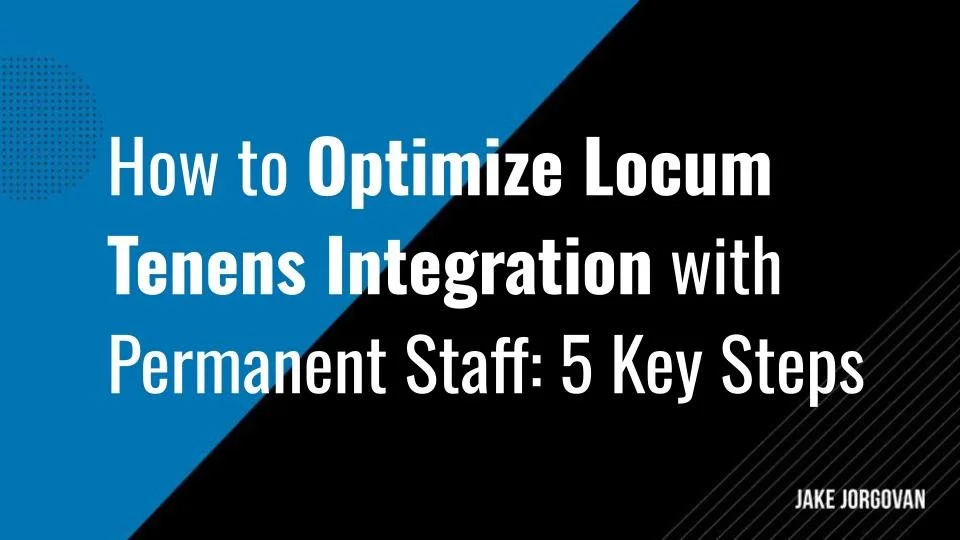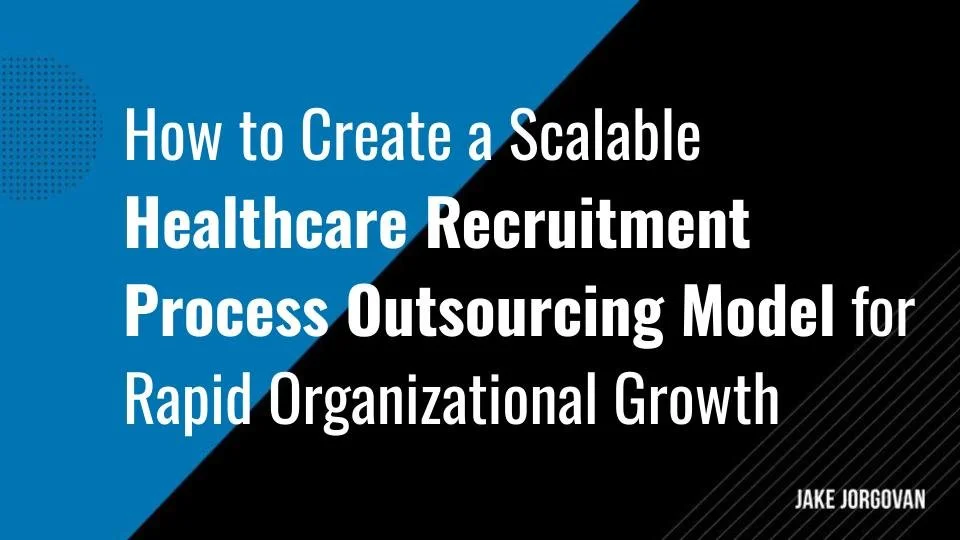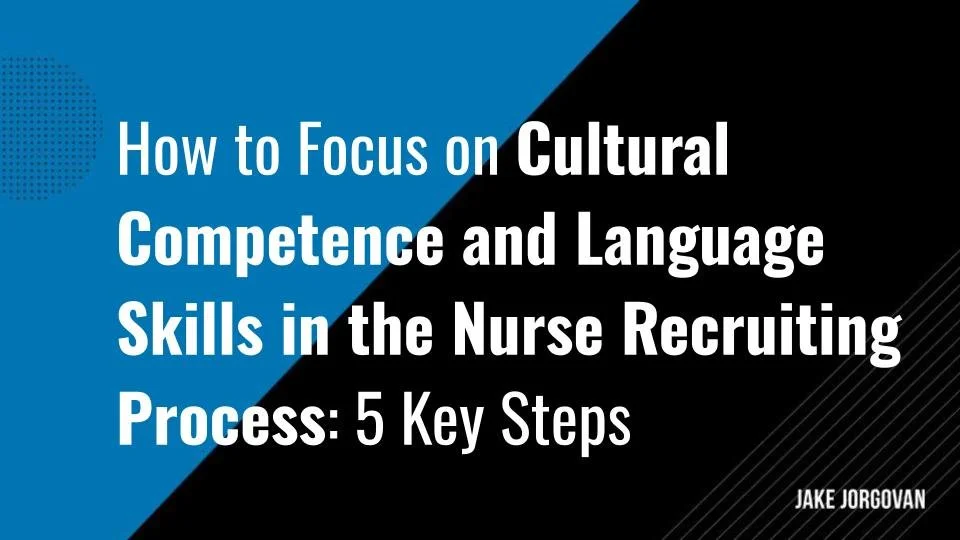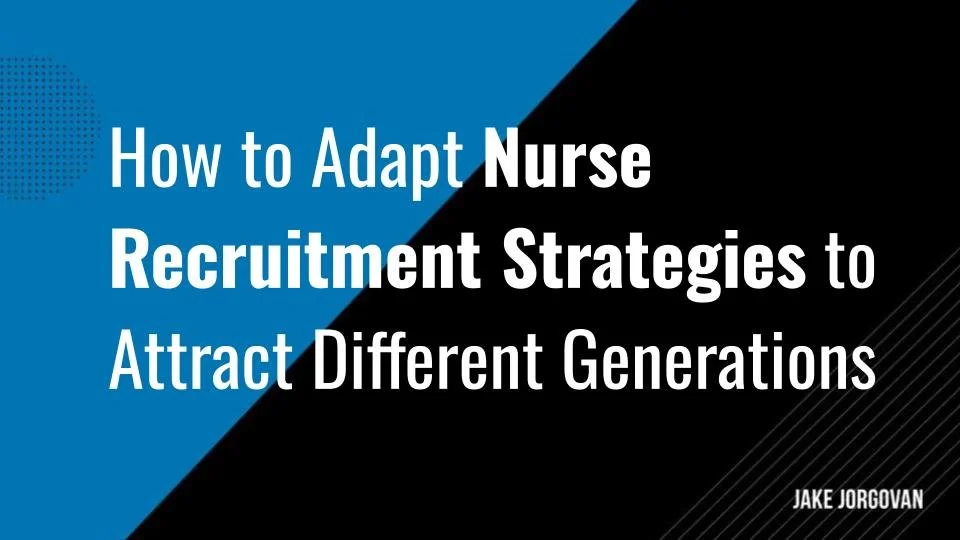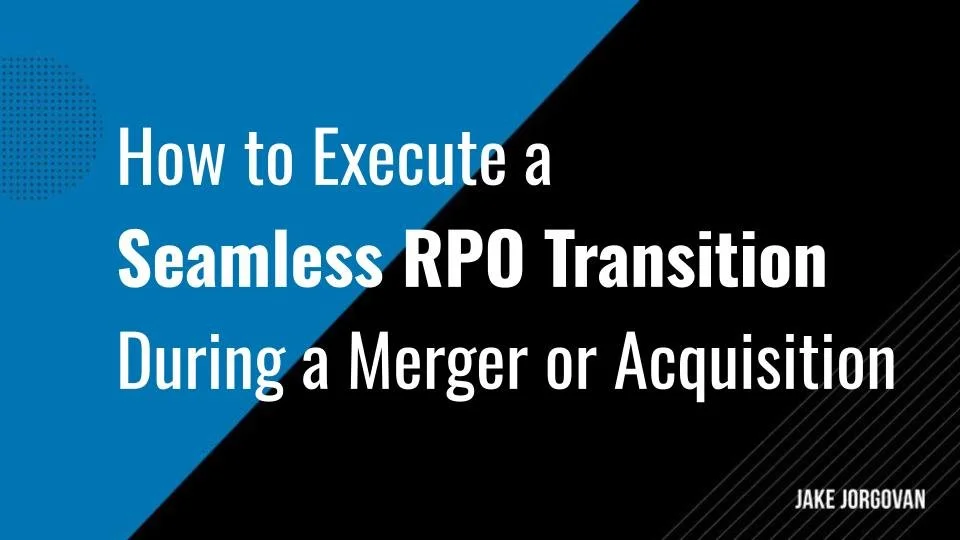Harness Emerging Technologies for Healthcare Recruitment: 5 Essential Tips
Recruiting talented healthcare professionals is a constant challenge. The average time to fill a healthcare position is 49 days, and this delay can cost hundreds of thousands of dollars.
The good news is that emerging technologies can play a key role here by transforming the way healthcare organizations attract and hire professionals.
From AI-driven tools to virtual reality, these advancements streamline recruitment while improving candidate experience. This article outlines five critical tips for integrating cutting-edge tech into your hiring processes.
With the right approach, your healthcare recruitment strategy can be faster, smarter, and more effective.
Let’s dive into how you can make it happen.
Why Use Emerging Tech in Healthcare Recruitment?
Emerging technologies are revolutionizing healthcare recruitment by streamlining processes and driving efficiency.
Artificial intelligence (AI) can reduce time-to-hire by up to 30% by automating resume screening and candidate matching. Besides, a study by Korn Ferry found that 48% of employers say big data and AI make their lives easier. Similarly, telehealth tools expand recruitment possibilities, enabling interviews with remote candidates and increasing access to a larger talent pool.
Data analytics plays a pivotal role in improving workforce planning, as 69% of employers using AI reported higher-quality candidates. Automation further enhances efficiency by eliminating manual scheduling and communication, saving recruiters up to 90% sourcing time. Moreover, advanced technologies improve job posting visibility by 70% through algorithmic content optimization.
By leveraging these tools, healthcare organizations can attract top-tier talent and ensure timely hiring to meet critical staffing needs. This ultimately improves patient care and operational performance.
5 Tips for Leveraging Technology to Enhance Healthcare Recruitment
Data shows that health systems will increase their technology budgets significantly. AI-powered tools are the biggest investment in clinical healthcare. By comparison, 67% of non-clinical healthcare centers will invest in CRM.
You must learn to harness these trends. And we’ll show you exactly how.
1) Utilize AI-Driven Tools for Candidate Screening and Matching
You want to save time and avoid human bias when recruiting healthcare professionals. The right candidates are often buried under hundreds of applications, and manual screening can lead to missed opportunities. Using AI-powered tools ensures that you speed up the process and target candidates who match your needs.
To implement artificial intelligence tools for better recruitment, start by exploring platforms like HealthStream Recruiting, designed specifically for healthcare. These tools often offer features like automated resume parsing, skill matching, and predictive performance analysis. Ensure the system is optimized to understand healthcare-specific terms, qualifications, and roles.
Then, define critical healthcare-specific keywords (e.g., clinical certifications, medical licenses) to train the AI to identify only qualified candidates. AI tools like HireVue or Paradox can analyze these inputs and refine their recommendations over time, ensuring precision in candidate matching.
Platforms such as ICIMS Healthcare Talent Cloud can handle repetitive parts of the recruitment process, such as sending follow-up emails, scheduling interviews, or tracking application statuses. This allows your team to focus on evaluating top talent rather than administrative tasks.
Let AI-driven platforms, such as Eightfold.ai, generate reports on candidate skills, experience levels, and potential fit for the role based on data patterns. These detailed insights reduce manual effort while providing comprehensive candidate evaluations quickly.
Finally, AI decisions should be reviewed periodically, and parameters should be adjusted based on feedback from hiring outcomes. Regular monitoring helps systems like Beamery or Pymetrics improve their algorithms, ensuring long-term efficiency and better hiring success.
“43% of hospital leaders feel like the first place they want AI to impact the system is through administrative, repetitive, transactional, and manual tasks” — Jeremy Sadlier, American Society for Healthcare Human Resources Administration
2) Implement Telemedicine Platforms to Expand Remote Recruitment
Geographical boundaries shouldn’t limit your recruitment pool. You’ll often need to look beyond your immediate surroundings to reach skilled professionals. Virtual platforms offer the ability to assess and engage with candidates remotely, improving speed and widening your reach. Here’s how to do it:
Select a telemedicine platform with recruitment features: Choose software that supports both recruitment interviews and showcases remote work options. Ensure it integrates with your current HR tools to streamline the hiring process without adding extra layers of complexity. Tools like Arya can seamlessly integrate with Applicant Tracking Systems (ATS), delivering high-quality healthcare professionals through AI-powered search and match capabilities. Similarly, Hire EZ can connect your recruitment teams with a diverse pool of candidates by leveraging its comprehensive recruitment CRM and access to over 14 million healthcare profiles.
Conduct remote interviews in real-time: Set up live video interviews that replicate the in-person experience. This allows you to evaluate skills, bedside manner, and communication style effectively. Platforms like Paradox AI can assist in automating interview scheduling, ensuring 24/7 candidate engagement, and reducing delays. These capabilities enhance the overall efficiency of the hiring process.
Assess candidates’ technical readiness: Test candidates' comfort with remote work tools, including the telemedicine platform, electronic health records (EHR) systems, and secure communication tools. Loxo provides access to verified contact information and helps recruiters efficiently engage with healthcare professionals, making it easier to assess their preparedness for remote work roles.
Integrate telehealth training modules: Embed telehealth training into the onboarding process for positions requiring frequent remote patient interactions. This prepares candidates to seamlessly transition into their new role without a steep learning curve.
Expand your recruitment efforts internationally: Use telemedicine platforms to interview international talent, especially for specialized roles that are harder to fill domestically. With tools like Arya and Hire EZ, you can source qualified candidates globally while automating documentation workflows to simplify visa and licensing processes.
Insider Tip: We’ve found that offering candidates a short, virtual “day-in-the-life” preview helps bridge any concerns they might have about remote work. Set up a shadowing experience using the telemedicine platform so candidates can interact with their potential team and observe real patient workflows. This dramatically increases engagement and reduces drop-off rates during recruitment.
3) Leverage Data Analytics to Identify Talent Trends and Optimize Recruitment Strategies
Hiring the right healthcare professionals involves more than just reviewing resumes. You need actionable insights into industry trends to adjust your recruitment strategy in real-time. Data analytics helps you identify patterns in candidate behavior and hiring processes.
Tracking key recruitment metrics like time-to-hire, cost-per-hire, and candidate drop-off rates is essential for optimizing your hiring process. These metrics allow you to identify bottlenecks early, enabling you to address issues before they escalate into larger problems.
“On average, healthcare organizations spend about $4,700 per new hire.” - Rave Health
Analytics play a crucial role in assessing candidate sourcing, helping you pinpoint which channels—whether job boards, social media, or referrals—consistently deliver the highest-quality candidates. You can improve efficiency and outcomes by focusing your resources on the most effective platforms.
Recruitment data also helps you identify talent shortages by highlighting areas where demand outpaces supply. These patterns may appear in specific specialties, geographic regions, or experience levels. Armed with this knowledge, you can adjust your sourcing strategy or develop competitive compensation packages to attract hard-to-find talent.
Insider Tip: We recommend building dashboards displaying real-time data for your hiring team. This transparency allows everyone to spot trends as they develop, so your adjustments aren’t reactive but proactive. Visualizing data this way keeps your team aligned and sharp. This ensures you’re always hiring efficiently without missing top talent.
Retention is another area where data can drive improvements. By reviewing information on employee tenure and exit reasons, you can uncover why healthcare professionals leave your organization and refine your retention strategies. A proactive approach here can reduce turnover and lessen future hiring needs.
Finally, predictive analytics adds a forward-looking dimension to your recruitment efforts. By analyzing patterns in resumes, interviews, and past hiring data, predictive models can identify high-potential candidates who are likely to excel long-term. This streamlines your decision-making and saves time and resources by ensuring you invest in candidates with the greatest potential for success.
4) Use Virtual Reality for Immersive Training and Onboarding Experiences
Traditional onboarding methods can feel disconnected, especially when you need healthcare professionals to hit the ground running. Using virtual reality (VR) speeds up the training process and immerses candidates in real-life scenarios. This reduces the time to competency and ensures a seamless transition into the role.
To get the best results from VR technology, choose VR solutions that simulate clinical environments and procedures relevant to your facility. Make sure it integrates with your existing learning management system (LMS) so tracking progress and certifications stays streamlined.
Develop simulations that replicate real-world challenges such as emergency room situations, patient interaction, or complex procedures. Candidates experience these firsthand, which accelerates skill development and helps assess their readiness.
It’s important to be specific here — tailor VR training to each role, from nurses to specialists, so you know the content is relevant and practical. This allows for personalized onboarding that targets the skills needed for their position.
Remember that not every challenge in healthcare is technical. Create VR simulations that test candidates' ability to communicate with patients, handle stress, or collaborate with a team. This gives you deeper insights beyond what interviews can reveal.
Finally, be sure to consistently track performance in real-time. Leverage VR’s data tracking capabilities to monitor how candidates perform in simulations. This helps you identify areas that need improvement early and provide targeted training.
5) Use Blockchain for Secure Credential Verification and Background Checks
Healthcare recruitment demands accuracy and security, especially when verifying credentials and licenses. Traditional background checks can be slow and prone to error, but blockchain solves this quickly and transparently. It lets you verify candidate qualifications in real-time while maintaining data integrity across all stakeholders.
Here’s a step-by-step guide to leverage blockchain in your recruitment process:
Step One: Select a blockchain platform designed for credential verification. Ensure the platform is tailored for healthcare recruitment and supports the verification of medical degrees, licenses, and certifications. For example, utilizing a platform like ProCredEx is a good idea. It is specifically designed for the healthcare sector, facilitating the verification of medical degrees, licenses, and certifications by connecting with institutions, licensing boards, and other trusted entities for real-time updates.
Step Two: Reduce reliance on manual verification: Use blockchain to automate credential checks. This removes the need to manually contact schools or professional boards, which speeds up recruitment and minimizes errors.
Step Three: Guarantee data integrity: Every credential stored on the blockchain is encrypted and immutable, ensuring that records are accurate and tamper-proof. You can trust that the information has not been altered, which gives you confidence in your hiring decisions.
Step Four: Streamline international hiring: Blockchain simplifies verifying credentials from foreign medical professionals, as it can instantly confirm qualifications regardless of where the candidate was trained or licensed. This reduces the complexities involved in global healthcare recruitment.
Step Five: Provide transparency to all parties: Blockchain offers candidates and employers full visibility into the verification process. Candidates know precisely when their credentials are approved, and your team can monitor progress without delays or miscommunications.
We’ve found that integrating blockchain with your existing applicant tracking system (ATS) boosts recruitment efficiency. It lets your team pull verified credentials directly into candidate profiles without switching platforms. This cuts down on administrative work and reduces the chances of missing critical qualifications during the review process.
“The global blockchain in healthcare market size was exhibited at USD 0.76 billion in 2022 and it is expected to expand to around USD 14.25 billion by 2032.” — Precedence Research
Using Emerging Technology in Healthcare Recruitment: Common Mistakes
While technology can bring huge advantages to healthcare facilities when it comes to recruitment, it can also bring challenges. Let’s take a look at some of the most common issues you might run into here.
1. Ignoring user experience for candidates
Companies often prioritize technology features over usability, resulting in clunky application processes and poor candidate experiences. Overly complex platforms can deter top healthcare professionals. In fact, a survey by Jobvite found that 59% of job seekers have abandoned an online application due to usability issues.
2. Over-reliance on automation
While automation streamlines processes, excessive dependence on it can make interactions feel impersonal, which alienates candidates seeking meaningful connections during the hiring process.
3. Failing to integrate systems
Disconnected systems for applicant tracking, communication, and assessment lead to inefficiencies. This lack of integration creates data silos and complicates decision-making.
4. Not analyzing recruitment metrics
Companies often implement technologies but fail to track key performance indicators (KPIs), such as time-to-fill or quality of hire. Without data analysis, it's challenging to measure the impact of these tools.
5. Overlooking compliance requirements
Emerging technologies can sometimes bypass regulatory needs, risking non-compliance with healthcare hiring standards and data privacy laws, such as HIPAA.
The Best Tools for Healthcare Recruitment
Here are some tools that use emerging technologies and strategies to help healthcare organizations improve their recruiting.
Arya — Offers a pay-for-performance healthcare recruitment solution that utilizes AI-powered search and match capabilities, talent intelligence, and in-house sourcing experts to deliver high-quality healthcare professionals directly to your Applicant Tracking System (ATS).
Paradox AI — Harnesses AI to streamline hiring processes, offering features like 24/7 candidate engagement, automated screening, and interview scheduling, which enhance efficiency and reduce costs for healthcare organizations.
Loxo — Allows recruiters to source and contact healthcare professionals efficiently. It provides access to over 11 million healthcare providers, offering verified personal contact information and advanced sourcing capabilities.
Hire EZ — Empowers healthcare recruitment teams by providing AI-driven sourcing and a comprehensive recruitment CRM. It offers access to over 14 million diverse healthcare profiles along with 750+ medical certifications, license states, and specialties.
Improve Your Healthcare Recruitment with Emerging Technologies
The future of healthcare recruitment depends on how well we adopt emerging technologies. Those who embrace innovation will secure top talent and stay ahead in an increasingly competitive market.
Are you ready to transform your hiring process? The tools are already available, but success depends on how strategically you use them. Now is the time to rethink your approach and use these advancements to their full potential.
Frequently asked questions
What technology is used in healthcare recruiting?
Healthcare recruiting leverages technologies like applicant tracking systems (ATS), AI-driven candidate sourcing tools, video interviewing platforms, and workforce management software to streamline hiring processes.
What is AI used for in recruitment?
AI is used to automate tasks like candidate screening, resume parsing, job matching, and even interview scheduling, enabling recruiters to focus on building relationships with top candidates.
What are the ethical considerations associated with using technology in healthcare recruitment?
Ethical considerations include ensuring data privacy, avoiding bias in AI algorithms, and maintaining transparency in how technology is used during the hiring process.
What are some major challenges in healthcare recruiting?
Major challenges include addressing talent shortages, ensuring cultural fit, maintaining compliance with healthcare regulations, and offering competitive compensation in a demanding industry.
How can I be a better healthcare recruiter?
Focus on building strong relationships, understanding the specific needs of the roles you’re hiring for, and staying up-to-date with industry trends. Use data-driven tools to streamline sourcing and screening, prioritize a positive candidate experience, and ensure compliance with healthcare regulations. Continuous learning and effective communication are key to attracting and retaining top talent in the competitive healthcare field.














